 The SHL Mechanical Comprehension Test - Practice and Tips for Success
The SHL Mechanical Comprehension Test - Practice and Tips for Success
Though not long, The SHL Mechanical Comprehension Test is regarded as a challenging pre-employment assessment on the path to many technical roles and positions.
The Mechanical Comprehension Test is somewhat like a physics exam but without dense formulas or calculations. Instead, it measures your intuition of how the physics of mechanical systems work and your grasp of fundamental mechanical concepts. It requires you to apply problem-solving abilities to questions pertaining to gears, pulleys, levers, springs, and other mechanisms.
On this page, we will cover the test format and time constraints, provide example questions with answers, and present tips for test preparation.
What is a Mechanical Comprehension Test?
Mechanical Comprehension tests, also known as mechanical reasoning tests or mechanical aptitude tests, are assessments that aim to ascertain a candidate’s ability to comprehend and apply basic physical principles. Typically, they cover simple and compound machines, mechanics, and electricity.
Industry recruiters primarily use these tasks to screen applicants for roles in maintenance, mechanics, and machinery operation.
💡Besides SHL, Mechanical Comprehension Tests are provided by Bennet, Ramsay, IBEW, the US Military (ASVAB), and others.
What is the SHL Mechanical Comprehension Test?
The Mechanical Aptitude Test by SHL is a unique assessment of mechanical skills that specializes in evaluating candidates’ understanding of mechanical principles by presenting practical, real-life situations involving machinery and tools.
This sets it apart from other mechanical aptitude assessments that feature more abstract, theoretical questions like which type of valve should be used for precise low flow or which pump is suitable for deep well pumping.
Below, we will look at several samples that exemplify the style of SHL Mechanical Comprehension questions, with answers and explanations.
First, let’s look at a rundown of the assessment’s basic features:
- The test contains 18 questions to be answered in 15 minutes.
- The questions are multiple-choice, with four answer options each.
- Once an answer is submitted, it cannot be changed.
SHL Mechanical Comprehension Practice Questions and Answers
There are many sub-topics covered on the test, such as pressure, magnetism, pulleys, springs, levers, gravity, acceleration, hydraulics, energy, and friction. However, there are five domains that represent the most common questions on the exam. Let’s look at one example of each.
Click on a topic to see a sample question or scroll down and solve the questions one by one.
Mechanical Devices Interaction
This section is concerned with the way compound systems work and how a mechanism will function when it combines several simple machines that interact with one another.
This is the most common type of SHL Mechanical Comprehension test question. Its format will usually involve presenting a system and asking the test taker to predict how it will behave.
Sample Question #1
In which direction will the slider move?
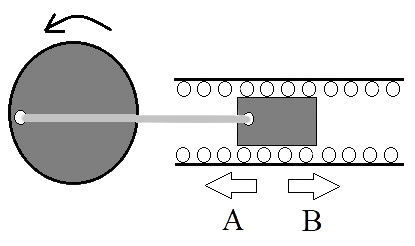
Gears
Despite being only one form of basic machine, gears are influenced by factors like ratio, torque, and directionality. This makes them very popular in mechanical aptitude tests.
Sample Question #2
In which direction will the smaller wheel revolve?
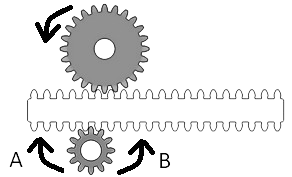
Tip: In questions with multiple steps, like sample questions #1 and #2, it is helpful to verbalize your thought process. When doing this, you are forcing yourself to check your answer twice: once visually and once verbally, essentially adding another "layer of protection".
Force and Torque
This section evaluates your understanding of how to apply force (or torque, in rotational movement) to mechanical systems. It includes the law of the lever, force equilibrium, and similar ideas.
Related mechanical concepts: first class lever, second class lever, third class lever, initial force, statics, angular momentum.
Sample Question #3
On which board can you hang a heavier load?
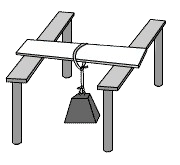
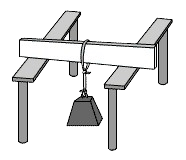
Fluid Mechanics
Fluid mechanics questions will ascertain your knowledge and intuition of hydraulics, flow, and how temperature and pressure interact to influence fluid behavior.
Sample Question #4
Which hose will spray the water further away?
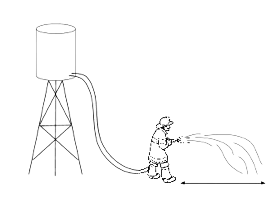
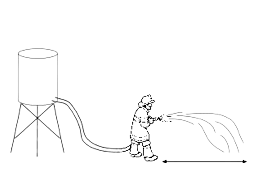
Tip: SHL Mechanical questions opt to show test-takers diagrams. This opens up the possibility of intuitive answers based on life experience. While this is certainly a tool, be mindful that it can also be deceiving. Always try to explain your answer in physical terms before making an intuitive guess.
Tools and equipment
In this category of questions, you will need to show an understanding of mechanical and power tools. This includes understanding which tools are specialized for which tasks or what physical principles they employ.
Sample Question #5
Using with wrench will it be easier to loosen a bolt?


Practice for the SHL Mechanical Comprehension Test
The SHL Mechanical Comprehension test is among the SHL aptitude tests featured on our all-inclusive SHL Practice Course. Inside, you can find full simulations of mechanical reasoning tests in the SHL style and explanations to boost your mechanical knowledge.
Take the SHL test fully prepared by using practice tests designed like the real test.
Practice for Other SHL Assessments
SHL is a major provider of pre-employment tests across many industries. The SHL Mechanical Comprehension Test is only one of many products they offer. Others include:
SHL Cognitive Tests include SHL Verify Assessment, Numerical Reasoning, Verbal Reasoning, Deductive Reasoning, Inductive Reasoning, Calculation Test, and Checking Test.
The SHL Personality Test is called the OPQ32.
SHL uses a trademarked testing and candidate evaluation platform known as Talent Central.
You can learn more about any SHL test by taking a free sample test online.
FAQs
When scoring your mechanical comprehension test, SHL provides a percentile rank instead of an absolute grade. This means your score is a representation of your relative performance compared to others and not of how many questions you answered correctly.
The SHL Mechanical Comprehension Test is challenging because it presents mundane situations you tend to judge intuitively. Many of the questions can be deliberately confusing, so it is recommended that you use practice tests to be well prepared.
To pass the SHL Mechanical Comprehension test, we recommend answering mechanical test sample questions. You can find them on the SHL website, or on our SHL Preparation Pack.



